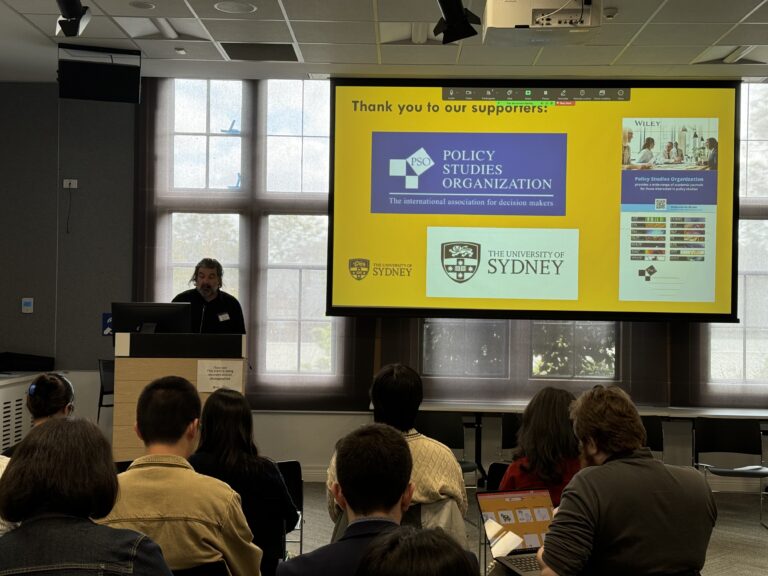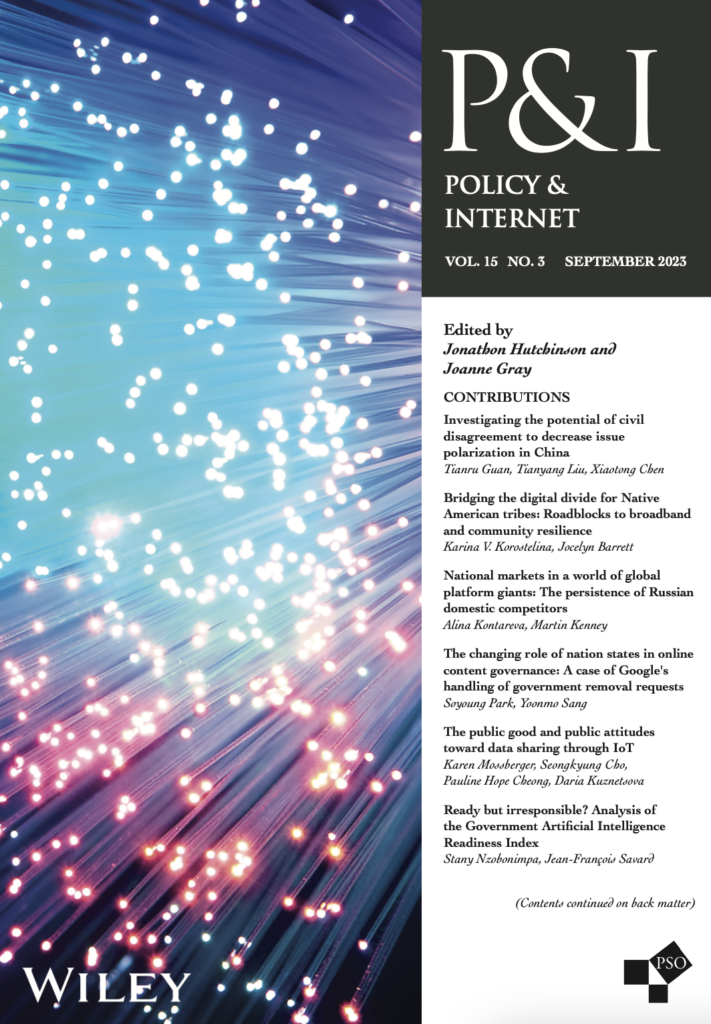The Policy and Internet Blog
Understanding public policy online
Policy & Internet 2024 Conference: Wrap-Up!
We would like to thank everyone who participated in this year’s Policy & Internet conference at The University of Sydney. Focusing on the contested nature of ‘good’ Internet policy, we were joined by a range of outstanding scholars from institutions from around the world, […]

About Policy and Internet
Policy & Internet is a leading interdisciplinary journal exploring the societal implications of digital technologies and responses from governments, industry, communities and individuals. We explore both enduring concerns—such as privacy, digital divides and freedom of expression—and emerging issues such as misinformation, digital geopolitics and automation. We prioritise original research on how the Internet and digital technologies—everything from social media and AI to blockchain and virtual reality—reshape power, participation and everyday life. We welcome submissions from all disciplines to submit work that deepens understanding of the Internet and digital technologies, and the social, ethical, and political choices that shape them.
Expression of Interest: Special Issues
Policy & Internet is accepting Expressions of Interest for future special issues relating to policies that influence, or are shaped by, the era of increased digitalisation. For those interested in editing a special issue, please click the ‘Submit EOI’ button and fill out the form.
Please note that we seek Special Issues for Volume 17:4 and onwards, released in mid-2025.
Articles from Policy and Internet
Subscribe to the Policy & Internet newsletter
Get the latest on our blog, events and highlights straight to your inbox.
Conferences

Policy & Internet 2024 Conference: Wrap-Up!
We would like to thank everyone who participated in this year’s Policy & Internet conference at The University of Sydney. Focusing on the contested nature of ‘good’ Internet policy, we were joined by a range of outstanding scholars from institutions from around the world, including Nanyang Technological University; University of Tehran; Yale University; University of Technology Sydney; University of Queensland’s Indian Institute of Technology Delhi Academy of Research; University of Canberra; University of Milan; University of California; University of Edinburgh; Beijing Language and Culture University; King’s College London; Hebrew University of Jerusalem; Vrije Universiteit Brussel; and Universidad Catolica Del Uruguay. Over three days, scholars and students presented research and engaged in discussion on a broad range of Internet policy issues, everything from news media, politics, fashion and entertainment content regulations, misinformation, artificial intelligence, the digital platform political economy, digital content labour, online harms, security, sovereignty and data ethics. Associate Professor Julia Powles gave a highly provocative keynote presentation, challenging the dominant rhetoric in AI policy. In her talk titled The irresponsibility of responsible AI she reminded us that AI harm is a systemic issue that can not be meaningfully addressed through individual responsibility. On day two, Cheryl Langdon-Orr hosted a lively discussion exploring cutting-edge research into ‘everyday Internet and policy issues, covering online gambling, recommendation algorithms, online pornography, the consumption of news content on social media and the monetisation of children online. Another highlight of day two was the panel presented by the Charles Perkins Centre Truth Decay Node which provided the latest interdisciplinary research on how online arguments, images and narratives shape beliefs, and guidelines for countering the spread of dangerous belief systems. On day three we were joined by Andrew Francis from Australia’s competition authority, the ACCC, who has recently lead a multi-year inquiry into the digital platform economy, and Sophie Murray-Farell from the NSW Government Premier’s Department who are currently developing groundbreaking policy initiatives aimed a addressing […]







